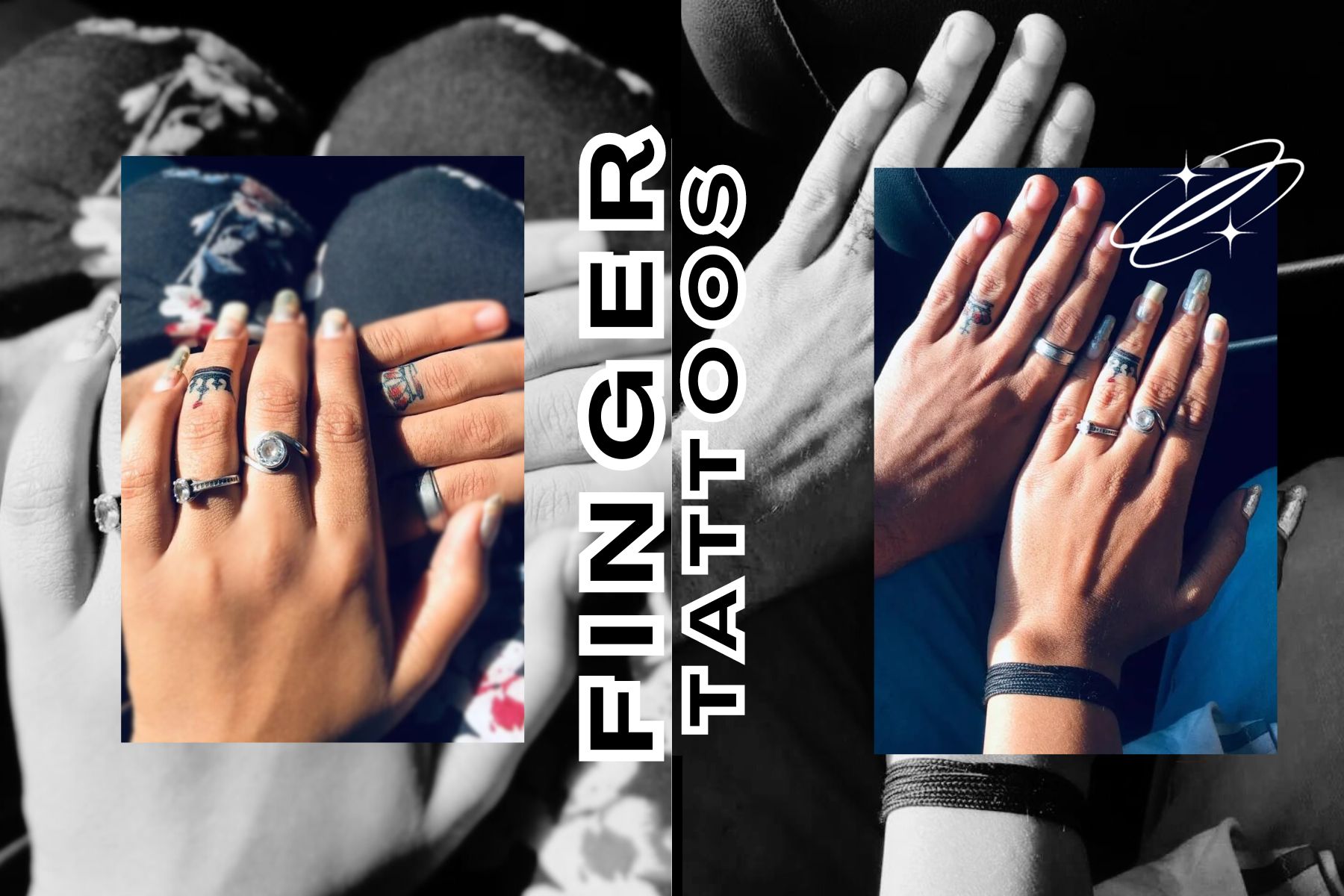In the realm of body art, tattoos have long been considered a form of self-expression. While tattoos on various parts of the body have been popular for centuries, there’s a rising trend that’s making a bold statement on a smaller canvas – finger tattoos. These intricate and tiny designs have been steadily gaining popularity for their subtlety, versatility, and the unique charm they bring.
In this blog, we’ll explore the fascinating world of finger tattoos, delving into their history, popular designs, pain factors, aftercare, and why they’ve become a favorite among ink enthusiasts.
The Allure of Finger Tattoos
Finger tattoos have gained popularity for several reasons. One of the most compelling factors is their subtlety. Unlike larger tattoos that demand attention, finger ink allows individuals to express themselves in a more discreet manner. This is particularly appealing to those who wish to maintain a professional appearance while still embracing their artistic side. Furthermore, it provides a unique and challenging canvas for tattoo artists.
The limited space requires precision and skill, making these miniature masterpieces a testament to the artist’s talent. The intimate nature of finger tattoos also fosters a deeper connection between the artist and the client, as the design becomes a shared collaboration.
Popular Designs

Despite the limited space, finger tattoos offer endless possibilities for creative expression. Some popular designs for finger tattoos include minimalist symbols, small animals, floral patterns, initials, and delicate geometric shapes. Many individuals choose symbols that hold personal significance, such as birthdates, zodiac signs, or representations of meaningful life events.
Moreover, couples often opt for matching finger tattoos as a symbol of their bond. From simple bands to intricate designs that align when the fingers are brought together, these tattoos serve as a permanent reminder of shared love and commitment.
Challenges and Considerations
While finger tattoos may be visually appealing, they come with their own set of challenges. The hands are constantly in motion and subjected to daily wear and tear, which can impact the longevity of the ink. Finger tattoos may fade more quickly than those on other body parts, and touch-ups may be required to maintain their vibrancy.
Additionally, the pain level during the tattooing process can be higher on the fingers due to the lack of padding and proximity to bones. This is an important consideration for those new to the tattooing experience.
Read More: Tatuajes: Beyond the Surface, Into the Self
The Significance of Finger Tattoos
Beyond the aesthetic appeal, finger tattoos often carry profound personal meaning for individuals. The choice to ink one’s fingers can signify a commitment to embracing one’s identity, an allegiance to a particular philosophy, or a celebration of life’s milestones. The visible and constant presence of finger tattoos serves as a reminder of the wearer’s journey, values, and unique narrative.
Pros and Cons of Finger Tattoos
Pros:
Subtle and Minimalistic: Finger tattoos are small and subtle, making them perfect for those who prefer minimalistic and understated body art.
Versatility: Despite their size, finger tattoos offer versatility. You can choose simple symbols, letters, or intricate designs based on your preference.
Less Painful: Generally, finger tattoos are considered less painful compared to larger areas of the body. The smaller surface area typically means a quicker tattooing process.
Easy to Hide: Finger tattoos are easily concealable, especially if you work in an environment where visible tattoos may not be fully accepted.
Cost-Effective: Due to their size, finger tattoos are often more affordable than larger tattoos, making them an attractive option for those on a budget.
Cons:
Fading and Blurring: The skin on fingers regenerates rapidly, which can lead to faster fading and blurring of the tattoo over time, especially if not properly cared for.
Limited Detail: The small size of finger tattoos limits the amount of detail that can be included, and intricate designs may not age well.
Prone to Smudging: Fingers are constantly in motion and come into contact with various surfaces, increasing the risk of smudging during the initial healing period.
Healing Challenges: Due to the constant movement of fingers, healing can be more challenging. The skin is prone to cracking, and touch-ups may be required more frequently.
Not Ideal for Elaborate Designs: If you desire a highly detailed or elaborate design, fingers might not be the best canvas. The limited space can compromise the intricacy of the tattoo.
Potential for Uneven Healing: The skin on fingers may not heal uniformly, leading to variations in ink retention and color over time.
Caring for Your Tattoo
Immediate Aftercare:
- After your finger tattoo is complete, your tattoo artist will likely cover it with a sterile bandage to protect it from bacteria and external elements.
- Keep the bandage on for the recommended time to allow the tattoo to begin the initial stages of healing.
- When removing the bandage, do so gently to avoid causing any trauma to the freshly tattooed skin.
Cleanse with Mild Soap and Water:
- Wash your hands thoroughly before touching your new tattoo.
- Use a mild, fragrance-free soap and lukewarm water to gently cleanse the tattooed area.
- Pat the tattoo dry with a clean, soft cloth. Avoid rubbing, as it can irritate the skin.
Moisturize Regularly:
- Applying a thin layer of fragrance-free, hypoallergenic moisturizer is crucial for preventing the tattoo from drying out.
- Keep the tattoo moisturized, but avoid over-saturating it. Too much moisture can hinder the healing process.
Avoid Sun Exposure:
- Protect your finger tattoo from direct sunlight, especially during the initial healing stages.
- If your hands are exposed to sunlight, use a broad-spectrum sunscreen with a high SPF to prevent fading and damage.
Be Mindful of Hand Activities:
- Minimize activities that involve extensive use of your hands, especially if they can cause friction or trauma to the tattoo.
- Avoid wearing tight rings or accessories that might rub against the tattooed area.
Watch for Signs of Infection:
- Keep an eye out for any signs of infection, such as increased redness, swelling, or unusual discharge.
- If you notice anything concerning, contact your tattoo artist or a healthcare professional promptly.
Patience is Key:
- Finger tattoos, due to the nature of the skin and its constant movement, may take a bit longer to heal than tattoos on other body parts.
- Be patient and allow the healing process to take its course.
Conclusion
Finger tattoos have emerged as a compelling trend within the world of body art, offering individuals a discreet yet impactful way to express their creativity and personal stories. As these miniature masterpieces continue to gain popularity, their significance goes beyond the aesthetic, tapping into the realms of personal identity, love, and life’s journey.
The allure of finger tattoos lies not only in their visual appeal but also in the meaningful narratives etched onto these small, yet significant canvases.



